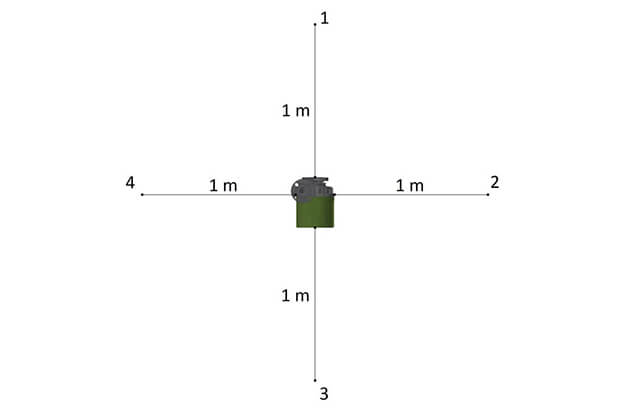Vibration& Noise
Vibration
When the motor of a pump is connected to the power supply, the motor rotates to drive the pump impeller, generating vibration. Table 1 in ISO 15783 provides the maximum allowable vibration limits when measured on the manufacturer’s test facilities.
The sources of vibration of a pump come from hydraulic pulsation and impeller imbalance. Vibration measurement is taken where the rotating element is connected to its support, such as at a coupling. Magnetic drive pumps do not have couplings, therefore, vibration measurement is taken at the pump casing and at the motor’s front bracket in three perpendicular directions, namely the side, top and axial directions. The unit for vibration can be expressed as displacement (mm) or speed (mms-1) or acceleration (mms-2).
When the vibration increases, it implies the bearing has been worn, increasing the imbalance. Therefore, we can monitor the vibration of the pump to determine the timing for maintenance, extending the service life of the pump.
When the vibration increases, it implies the bearing has been worn, increasing the imbalance. Therefore, we can monitor the vibration of the pump to determine the timing for maintenance, extending the service life of the pump.
Noise
Noise is a sound that is loud or unpleasant. The unit for noise is expressed in decibels, dB.

where,
P = measured sound pressure in Pa
Pref = reference sound pressure, 20μPa
P = measured sound pressure in Pa
Pref = reference sound pressure, 20μPa
Pump noise measurement is shown in Figure 1. The measurement is taken 1 meter from the pump from the front, back, and side positions. Prior to running the pump, the background noise level is taken. The pump’s noise level is then compared to the background to determine the incremental noise of the pump.
The sources of the noise of the pump come from the noise of the fluid in the pump and the impact of the impeller on the thrust ring. From the motor, the noise comes from electromagnetic sound, the rotation of the cooling fan, the bearing, and the friction of the oil seal.
The sources of the noise of the pump come from the noise of the fluid in the pump and the impact of the impeller on the thrust ring. From the motor, the noise comes from electromagnetic sound, the rotation of the cooling fan, the bearing, and the friction of the oil seal.

Figure 1

